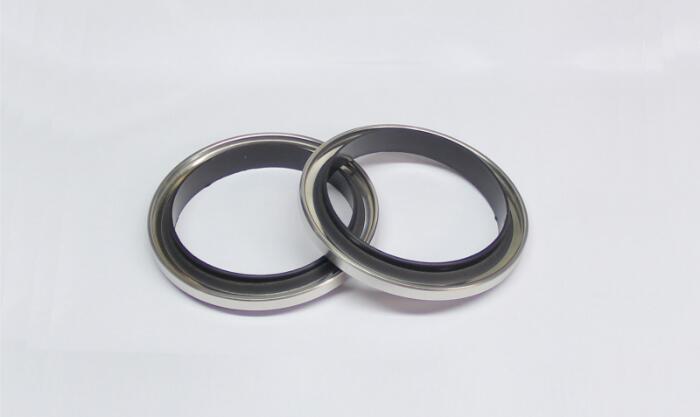The purpose of oil seals is to provide sealing between the rotating crankshaft and the outside. Classical oil seals consist of a metal housing that carries the dynamic sealing lip and also provides the static sealing function. The sealing lip of oil seals is usually manufactured of elastomer material, and is in contact with the surface of the rotating shaft. Hereby, the lip is pressed onto the shaft surface by means of a spring ring. As a result of the rotational movement, there is a sealing gap of approx. 1 µm at the lip edge. Oil can enter this gap, which serves to lubricate the sealing lip.

Ongoing developments in engine design result in ever higher demands on this type of oil seal. Higher engine speeds and oil temperatures, longer intervals between oil changes and lubricants with modern additives that react aggressively with the sealing materials require new and lasting solutions. The material for future oil seals is named POLYTETRAFLUOROETHYLENE or simply PTFE. This synthetic material is more commonly known under it trade name polymer.
Low friction and minimum power consumption are the decisive advantages offered by PTFE oil seals. These seals can be used without problems also with dry operation or insufficient lubrication. The materials thermal properties, with an operating range of -130°C to +200°C, are unrivalled. Moreover, PTFE is featured by high chemical resistance and a low breakaway torque after standstill.
When heated, PTFE attempts to return to its original form. In other words: The material “remembers” it’s original condition. This phenomenon is known as the plastic memory effect, and permits seals to be built without a pretensioning spring. During manufacture, the sealing lip is shaped as a flat ring, which is molded to the reinforcing ring. During assembly onto the shaft, the initially flat sealing lip expands and folds to match the shaft diameter. As soon as the sealing lip heats up during engine operation, it attempts to return to its original shape.
The outer housing is made of stainless steel. An O Ring of fluoroelastomer ensures optimal static sealing. The internal diameter is perfectly concentric with the outer diameter. The actual sealing lip is made of highly wear resistant and low friction PTFE. An additional dust seal (rubber lip or felt strip) provides an effective barrier against contaminating particles.
Post time: May-04-2020

